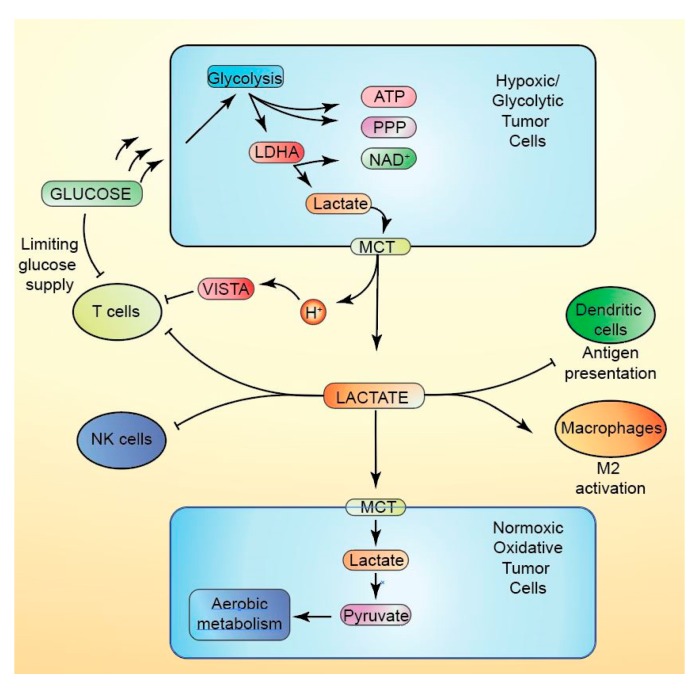Figure 3.
Lactate metabolism in the tumor microenvironment. Rapid glucose uptake by tumor cells, particularly hypoxic cells, depletes glucose from the tumor microenvironmen (TME), thus limiting glucose availability for T cells. Rapid glycolysis in tumors provides a ready supply of ATP and anabolic intermediates; NAD+ is regenerated to avoid reductive stress by the production of lactate by LDHA (lactate dehydrogenase A). Lactate is then exported by MCT (monocarboxylate transporter) family members to the TME, where it accumulates and acidifies the TME. Oxidative tumor cells can take up lactate and convert it to pyruvate to supply acetyl CoA for aerobic metabolism. High levels of lactate directly suppress T cell and natural killer cell function in the TME. The acidification of the TME suppresses T cell response via activation of VISTA (V-domain Immunoglobulin suppressor of T cell activation) signaling. Lactate further suppresses TME immune surveillance by blocking antigen presentation by dendritic cells and promoting M2 activation of macrophages.

